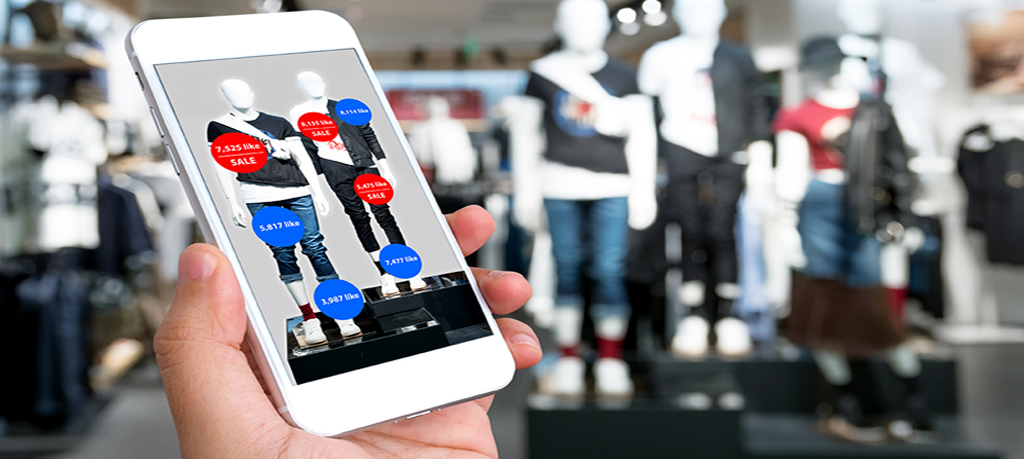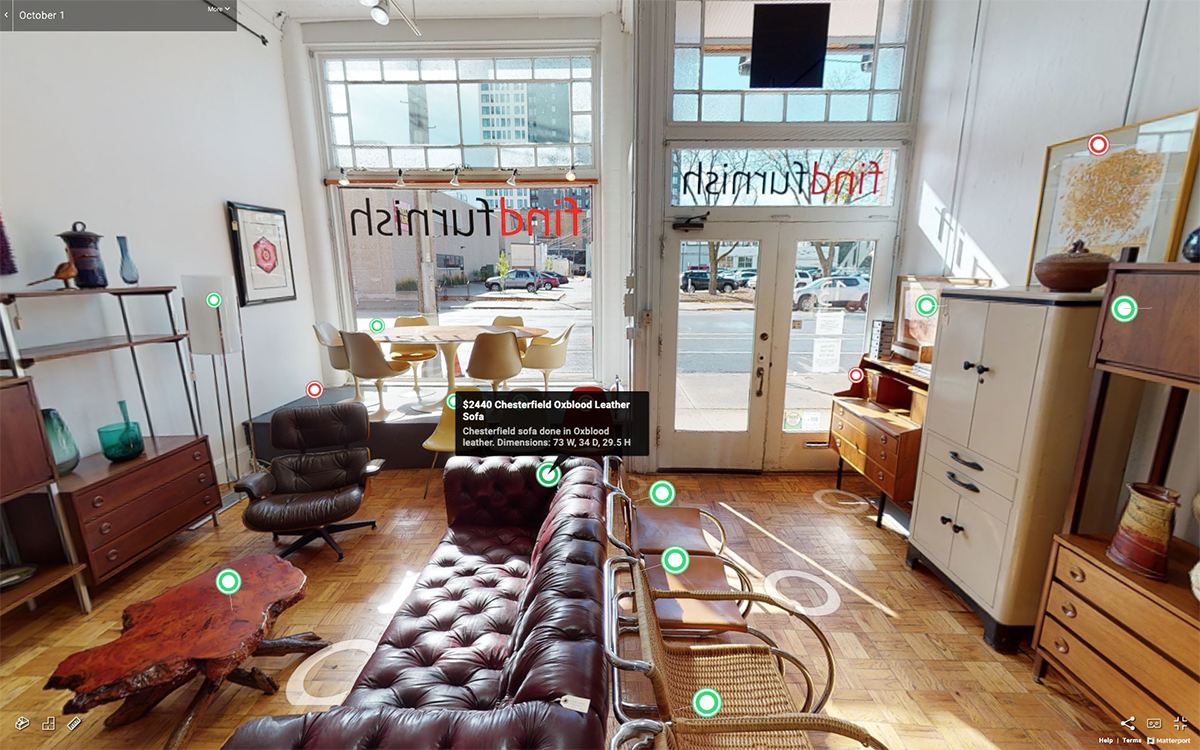Over the past few months, we’ve discussed the power and artistry of visual merchandising with Kristin Lauer. We learned from Anthony Perrotta what it’s like to work in the field setting stores at J.Jill and other retailers. We discussed space planning, Big Data, and how to bring teams up to speed with Tracy Allen of Walgreens.
For Part V of our discussion, “Putting the ‘Visual’ Back in Visual Merchandising,” we are chatting with Michael Abata who gives us a window into the future of marketing and the technology that helps bring together all of these elements of visual merchandising to drive the sales. Michael is a thought leader and cultural and consumer futurist in brand marketing and retail. He has been with Target for almost 15 years in various marketing roles. Michael is also a strategy advisor for virtual reality start-up, REM5 VR, and volunteers for Twin Cities Startup Week.
Scott Heyer (SH): Michael, we’re so glad you wanted to join us to talk about retail, virtual reality and technology. You’re a thought leader in the retail marketing landscape. How did you become interested in this aspect of retail?
Michael Abata (MA): It traces back to high school. One of my teachers noticed that I was interested in graphic design and introduced me to an organization called DECA. The purpose is to show students they can have careers in marketing and sales. I became incredibly involved and competed all over the U.S. It opened my eyes to this thing called marketing, which I didn’t previously know about.
SH: There’s a lot happening socially right now. How does that play on a daily basis? As social issues arise, do you find that the goalposts are always changing in terms of what brands are striving for? And how do you keep up with the culture?
MA: I’m seeing the need to adapt more quickly than ever. When COVID started, everybody in retail had to pivot. The murder of George Floyd and the start of the Black Lives Matter movement was another huge inflection point. Brands are monitoring daily for what consumers are thinking and what’s most important to them, and then literally creating marketing campaigns for the next week. Before the pandemic, you could start planning for Easter in August. Now, brands can’t plan that far ahead. They have to put mechanisms in place that allow for flexibility as they get closer to a launch.
VR and AR Adoption in Retail
SH: Technology is important in marketing, and one area that’s getting a lot of buzz is AR/VR. It’s being used to help consumers visualize products in their home or virtually try on items like glasses to help boost their confidence to complete the sale. You’ve been a strategy advisor with REM5, which is a virtual reality startup. From your perspective, how has the adoption of AR/VR been received in retail? And how do you see that technology impacting in-store experiences in the future?
MA: Adoption of AR and VR has been very slow. Part of that is because the technology hasn’t been there and because you needed to have sophisticated computers and software. For a long time, the focus for AR/VR was on gaming – that’s where the money and the interest were. In 2014, Facebook bought Oculus, which started an acceleration. Your phone is now the computer and the price of the technology is going down.
Consumers are still in the early stages, but I believe we will start seeing consumers have greater access to it and understand it. There’s also a need for it, as people are limited in going to physical spaces.
SH: Once COVID hit and retailers closed, you mentioned that there was a local business in Minneapolis, where you live, that had pivoted to continue bringing in revenue and keeping their customer base happy. And they did it all virtually. Tell us about that.
MA: Yes! It’s a small vintage furniture store around the block from me called findfurnish. It’s one of those shops with a constantly changing selection based on what they get in. Starting in March during the lockdowns, the store closed, but there was still a need in the community. As more people were staying at home, they were looking at their living room or bedroom, saying, “I need to get a new couch or a new desk.”
So, they brought in Matterport, which is home preview software used for real estate, and they started creating 3D imaging of their entire store. This 3D technology allows you to walk around and look in each room like you’re shopping. They created big hang tags so as you get closer to the item, you can see the price. It was genius and their customers responded. Everyone felt like they were getting that hunt-and-pick experience they craved. Now, every week they reshoot their showroom, complete the Matterport scan, and send out a notice on Facebook and Instagram.
SH: They’ve created a whole new experience. Because of the shut-down, they were forced to think about their brand differently. How do you drive traffic? How do you create an experience people are going to love? And most importantly, how do you get people to talk about it? As a small business, they’ve been able to experiment and iterate faster than a larger organization with hundreds of stores. Do you see this technology being scalable at other retailers?
MA: I absolutely do. The technology is there to create a 3D experience. Any store that’s using planogram software technically already has all the information of what’s on every shelf in the store. The layout is on the planogram, so you could create a 3D environment of the store. It can be a powerful tool.
Permanent Changes from COVID
SH: Let’s talk about how COVID plays into new standards that retailers are experimenting with. At restaurants, you can now get drinks-to-go. At Walgreens, you can pick up your bread and milk in the drive-thru when you pick up your prescription. Retail stores are now acting as fulfillment centers. We’ve seen retailers be agile in meeting the needs of their customers. What other technologies that were implemented as temporary solutions to COVID-19 will become permanent?
MA: That’s a good question. Big box retail saw a huge acceleration in the amount of online and pick-up/drive-up orders. Before COVID, it was only a select group of tech-savvy customers who understood what it meant to order online then drive up and have somebody put items in your car. COVID forced more retailers to offer that for customers who want a contactless experience. I don’t think consumers are going backward on that. People have discovered the convenience of contactless pickup. All leading indicators show growth with third-party services like Shipt and Instacart.
Looking at Holiday Season 2020
SH: How do you think holidays and holiday promotions will change this year for retail? At the start of the pandemic, retailers like Home Depot were limiting promotions to reduce traffic to stores. They only wanted people coming for the essential items. In the past, Black Friday has been the big event where people line up outside the stores to grab the hot deals. How do you see the holidays unfolding this year?
MA: Walmart kicked the season off by announcing they are not going to be open on Thanksgiving Day and we quickly saw a lot of retailers follow suit. In our culture, we’ve really built up the Black Friday experience. This year because of the pandemic, Walmart made a decision that they didn’t want to create a frenzy, so they’re spreading Black Friday deals out over the season.
Now that Amazon Prime Day has moved from July to the beginning of October this year, I think we’re going to see the season kick-off sooner with holiday deals and sales expanding. We used to peak on Black Friday and Cyber Monday. Now, that curve is getting smushed. Deals will start in October and go all the way through the end of December.
In Part VI of our series, Michael and Scott take a deep dive into curation and localization in retail.


